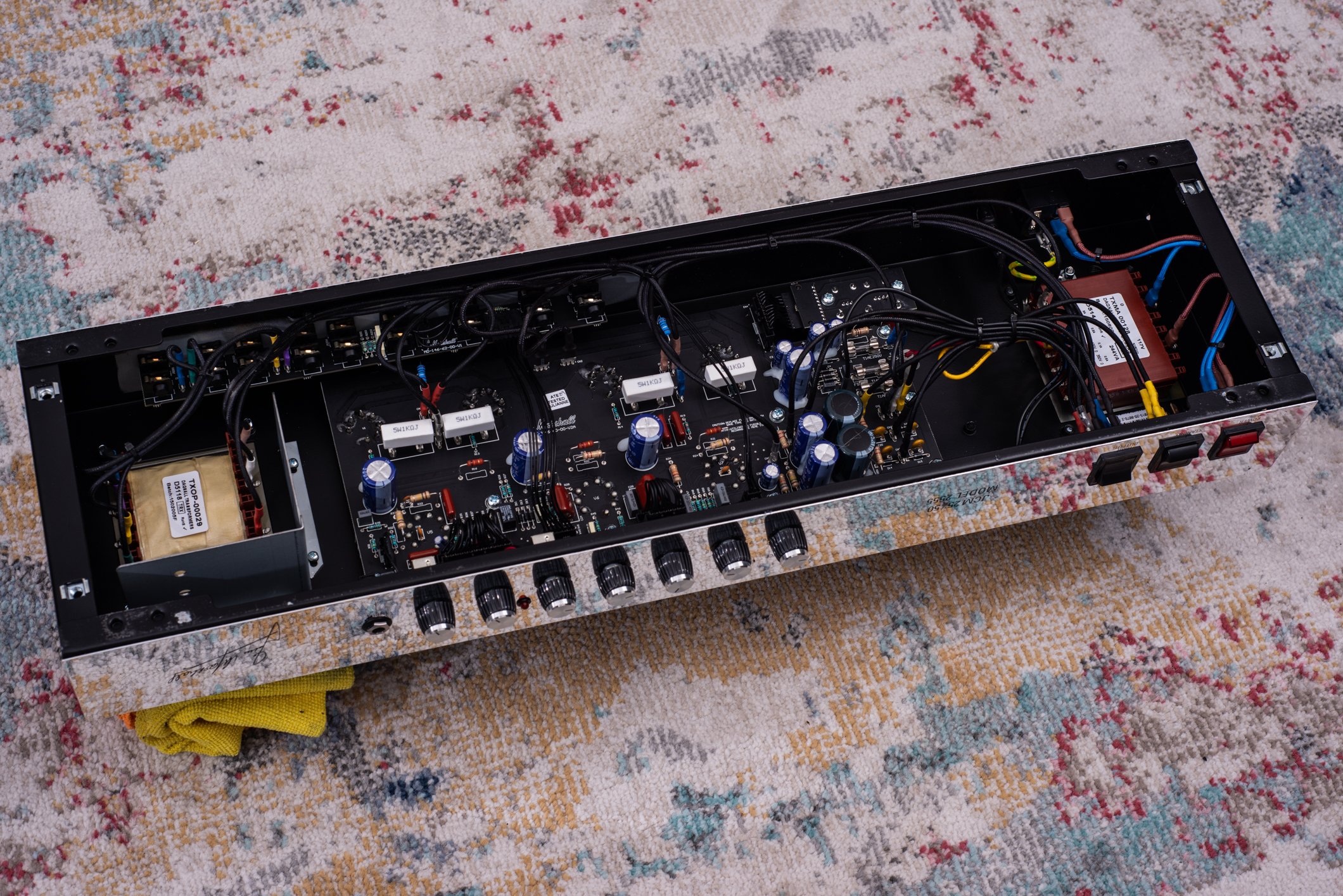2015 Marshall 2555x Silver Jubilee Reissue
Specs
2 Channels
100w Output
4x EL34 Power Tubes
3x 12AX7 Preamp tubes
Overview
After having, and selling, another 2555X, I felt I didn’t really give it a fair shake. It wasn’t as aggressive sounding as my 2205, and I just didn’t get along with the darker voicing combined with the amount of gain it had, which is less than I expected for an amp equipped with diodes. As my knowledge of both good tone and guitar amplifier circuits has improved, I’ve learned that the diodes are more of a style choice - voicing and grit - and less of a “more distortion” thing, although they can be used for that too.
The Jubilee has two sets of diodes in fact. There is an asymmetrical section of 5 diodes (two of which are LED’s, which are also diodes - “Light Emitting Diode”) which is always on for the lead channel. These can never be disengaged, so any time you are on the lead channel of the amp, you’re hearing the diode-enhanced overdrive. LED’s have a softer clipping character, or “knee” than other diode types, and the arrangement of 5 diodes clips the upper and lower lobes of the signal differently, resulting in a pleasing harmonic distortion as long as you are driving the amp hard enough to cause this clipping (in short, as long as the incoming signal is loud enough, such as from your pickups or with a boost pedal). The second set of diodes is only engaged when the “Rhythm Clip” is pulled, which affects the normal channel only. This is a simple pair of diodes in a symmetrical configuration, resulting in a different style of clipping character, and helps differentiate the rhythm channel from the lead channel in a subtle way, even if you dial the amount of overdrive to be similar. When the rhythm clip is disengaged, this channel functions as somewhat of a clean channel, although it can still get a little dirt at higher volumes. Both channels do share a traditional 3-band EQ and presence control for additional tonal shaping.
These diodes are all located after the 2nd tube gain stage, much like the later JCM900 MkIII amps (model 2100 and 2500), which later evolved into the SL-X amps. Speaking of topology, this amp’s effects loop is located before the 3-band EQ section, which is extremely odd for a guitar amp. This also means if you run a preamp, or boost pedal, or other device through the loop, the EQ settings will absolutely affect the tone you get. This is in contrast to most other Marshall effects loops, where you can plug a preamp into the return and get just the raw power amp output with no EQ coloring. This tone stack is also a plate driven tone stack, which is very different sounding than other Marshalls which have the tone stack on a cathode follower.
In addition to the diodes, this amp also has a few other features that were later integrated into the JCM900 series (which released only 3 years after this amp). An effects loop, which works as you’d expect, and a high/low power switch right on the front panel. This switch simply changes the power tube configuration from pentode to tetrode operation, which reduces the volume level of the amp, but also changes the character of the power tube break up, with perhaps a little less harmonic content to my ear. Personally, I prefer high power mode even if I have to turn the overall volume down, or use a volume in the effects loop.
I’m glad I spent some more time with this amp, but I can see why some of the Marshall faithful do not like this amp as much as a 2203 or 1959SL. The diodes, plate tone stack, and other departures from the more conventional Marshall design give it a unique tone, but not a tone you’d necessarily want if you were expecting that bright, cutting sound they are most commonly known for.


















